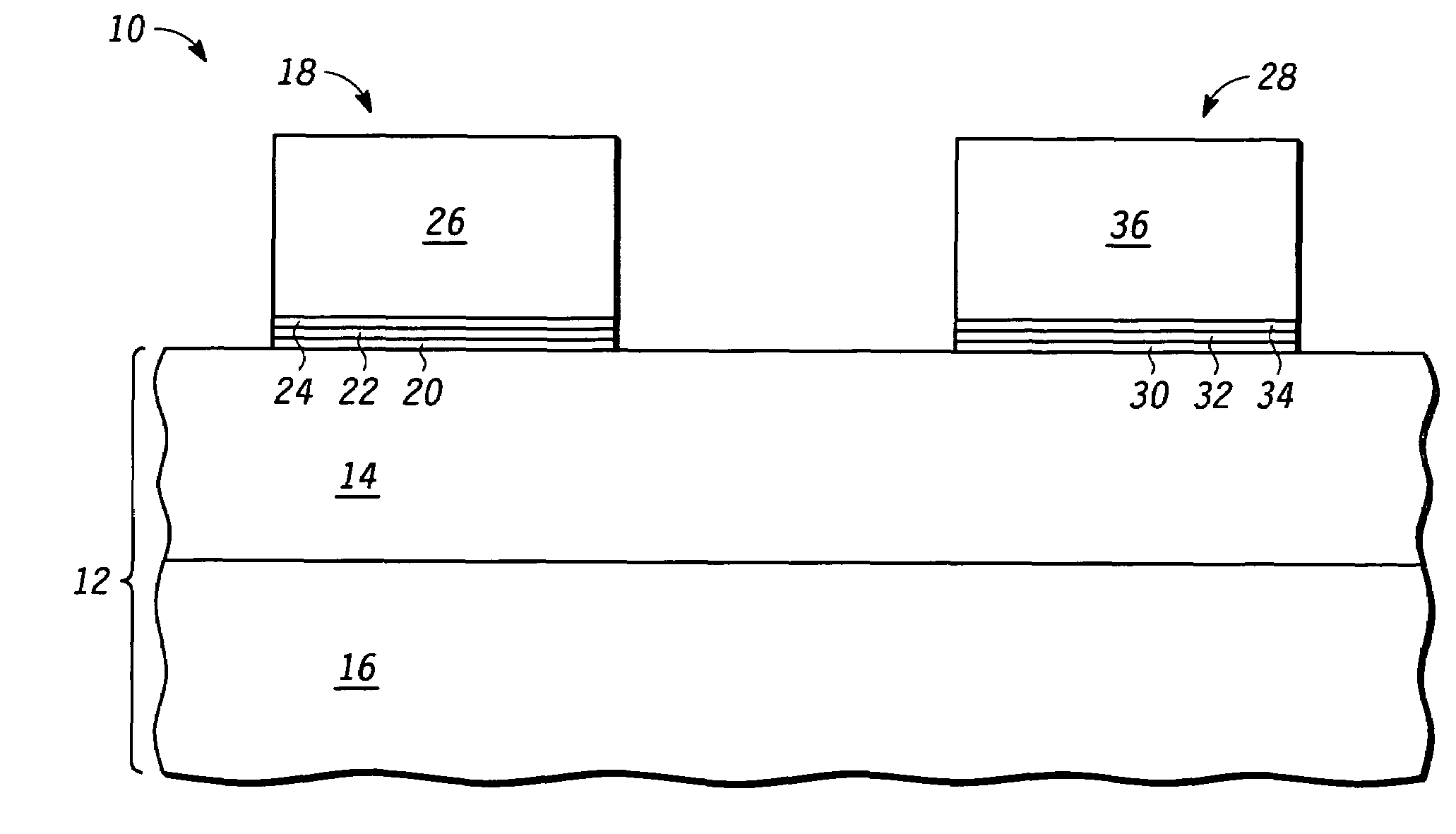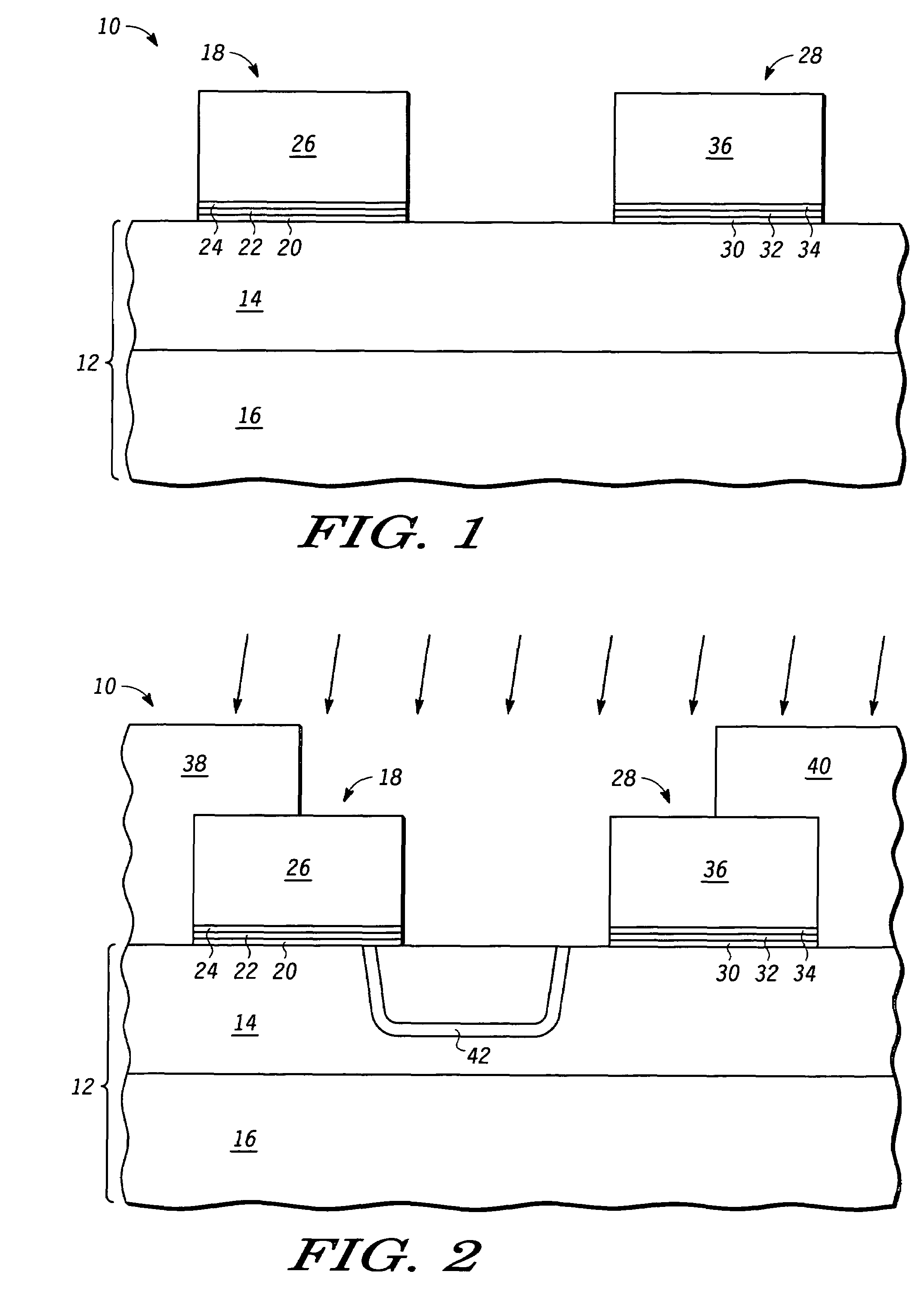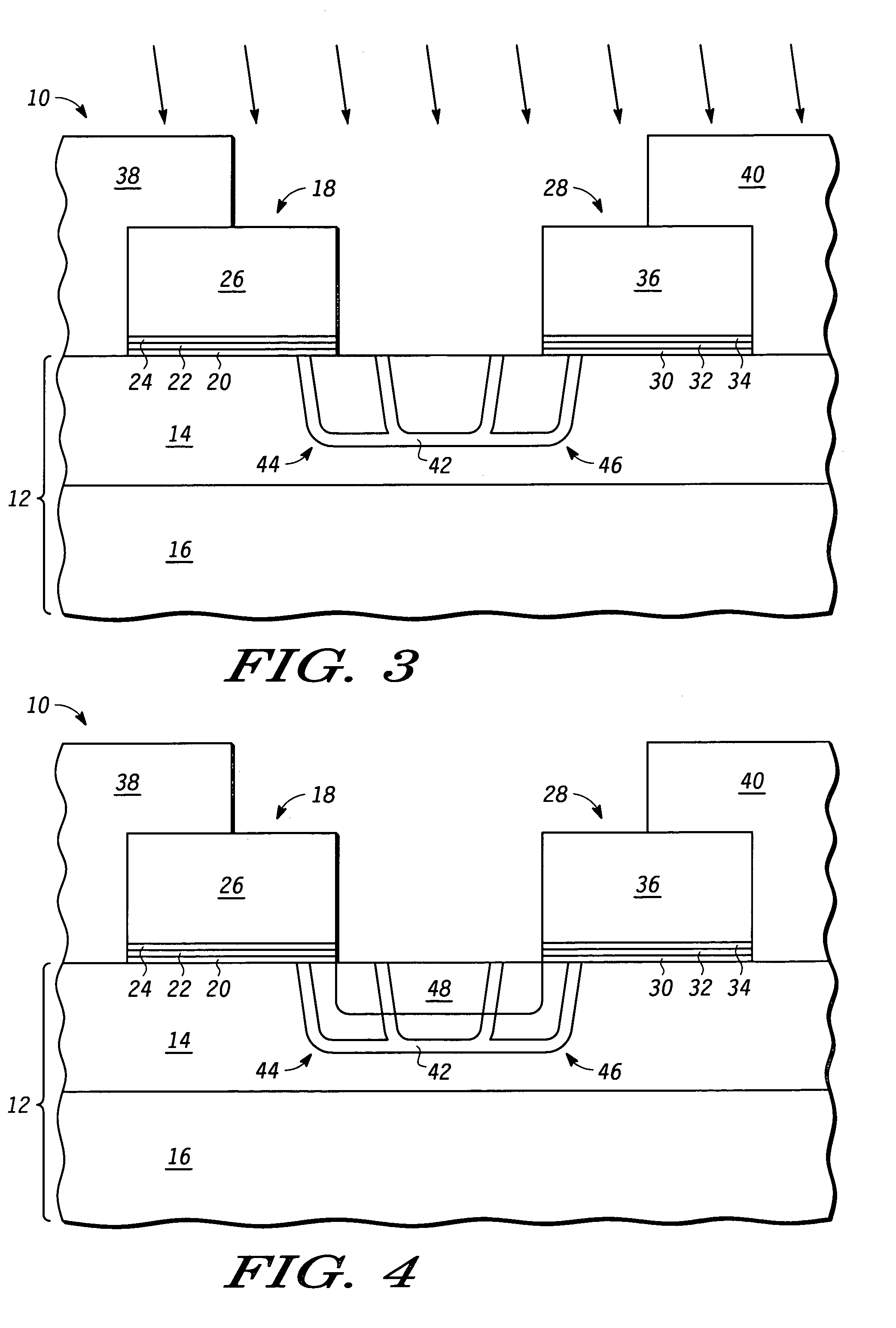Methods for programming a floating body nonvolatile memory
a floating body, non-volatile memory technology, applied in semiconductor devices, digital storage, instruments, etc., can solve the problems of reducing the recombination time, unable to completely or completely control the programming operation, and the inherent bipolar transistor inherent in any mos transistor becomes conductive,
- Summary
- Abstract
- Description
- Claims
- Application Information
AI Technical Summary
Benefits of technology
Problems solved by technology
Method used
Image
Examples
Embodiment Construction
[0018]Illustrated in FIG. 1 is a semiconductor device 10 having an NVM (nonvolatile memory) cell 18 and an NVM cell 28. An insulator layer 16, commonly implemented as an oxide, is provided. Overlying the insulator layer 16 is a layer of silicon 14. Collectively, the layer of silicon 14 and insulator layer 16 is an SOI (silicon on insulator) substrate 12. In one form the layer of silicon is doped to have a P-type conductivity but it should be well understood that an opposite conductivity may be formed. NVM cell 18 has a tunnel dielectric 20 overlying the layer of silicon 14. Overlying the tunnel dielectric 20 is a charge storage layer 22. Overlying the charge storage layer 22 is a dielectric layer 24. Overlying the dielectric layer 24 is a gate 26. NVM cell 28 has a tunnel dielectric 30 overlying the layer of silicon 14. Overlying the tunnel dielectric 30 is a charge storage layer 32. Overlying the charge storage layer 32 is a dielectric layer 34. Overlying the dielectric layer 34 is...
PUM
 Login to View More
Login to View More Abstract
Description
Claims
Application Information
 Login to View More
Login to View More - R&D
- Intellectual Property
- Life Sciences
- Materials
- Tech Scout
- Unparalleled Data Quality
- Higher Quality Content
- 60% Fewer Hallucinations
Browse by: Latest US Patents, China's latest patents, Technical Efficacy Thesaurus, Application Domain, Technology Topic, Popular Technical Reports.
© 2025 PatSnap. All rights reserved.Legal|Privacy policy|Modern Slavery Act Transparency Statement|Sitemap|About US| Contact US: help@patsnap.com



